Insights
What does Bloomreach Insights do?
Bloomreach Insights is an action-oriented analytics tool that helps you intuitively understand your customers' activity on your site.
Insights shows you powerful data about your site and how shoppers interact with your site. Insights can recommend changes to improve customer experience, which in turn can increase your revenue. You can find out what your customers want, see relationships among products, and prioritize what you need to do.
Instead of requiring you to manually dig for information, Insights automatically identifies issues and suggests resolution on an ongoing basis. The tool tells you why your customers behave certain ways throughout their journey on your site. You can use this information to remove the friction between them and their discovery and purchase of your products.
What kind of information about my site does Insights show me?
While the information that Insights shows you is specific to your own site, here are some typical examples:
| Question | Data | Suggestions |
|---|---|---|
| Which category pages aren't showing the right items? | Category pages that have thin content. | Boost or bury products. Add redirect rules. |
| Which category pages are showing the wrong products? | Category pages that have poor relevance. | Boost or bury products. Add redirect rules. |
| How are customers leaving my site? | Site search queries with high exit rates. | Boost or bury products. |
| Which products should I promote? | Promotion opportunities of products with high business performance, but low visibility on your site. | Banner promotions. Boost products in search results and category pages. |
| Can my customers find what they're looking for? | Identify what people are looking for when they open a category or product page. | Banner promotions. Boost products in search results and category pages. |
| What types of products drive interaction with my site? | Identify themes or concepts, such as low cost, hip, eco, exclusivity, color, pattern, and style. Determine how they are performing. | Influence shopper behavior, site navigation, and category pages. |
Expected Duplication
The device type dimension, although is captured and stored for analytics, some of the reports do not display it in the reports. Due to this, different rows showing data according to device types may appear duplicate to the user.
Underperforming category pages
Let's take a look at an example. Molly is a merchandiser at Shoe-In, a retail site that sells shoes.
Assessments
To assess the performance of Shoe-In's category pages, she opens the Assess Performance playbook.
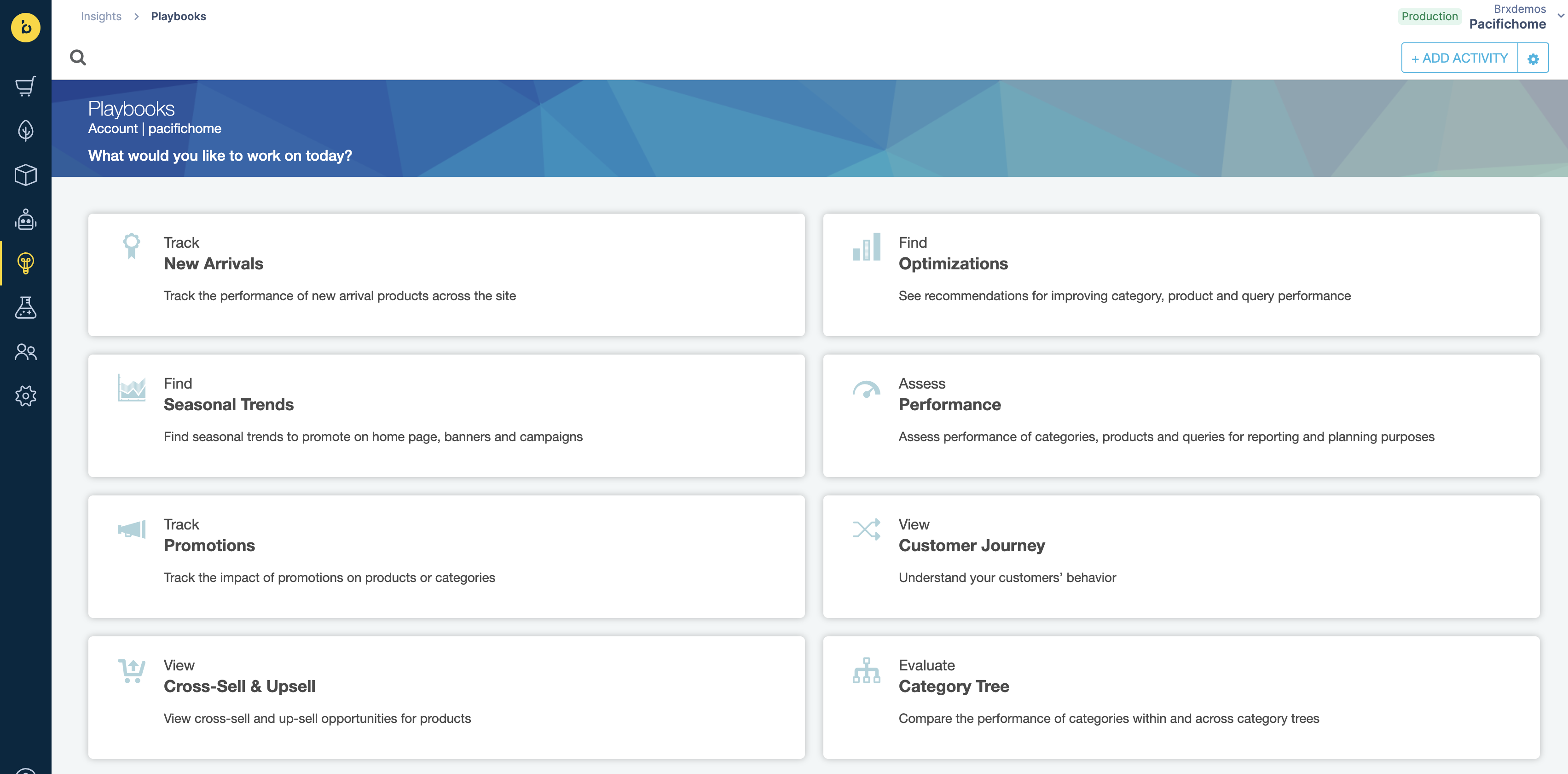
She enters the name of a category page that she wants to examine: women's running shoes. Insights returns detailed information about the category page. Molly examines this data. By default, Assess Performance is selected for her. Before we look at recommendations, let's look at the assessment.

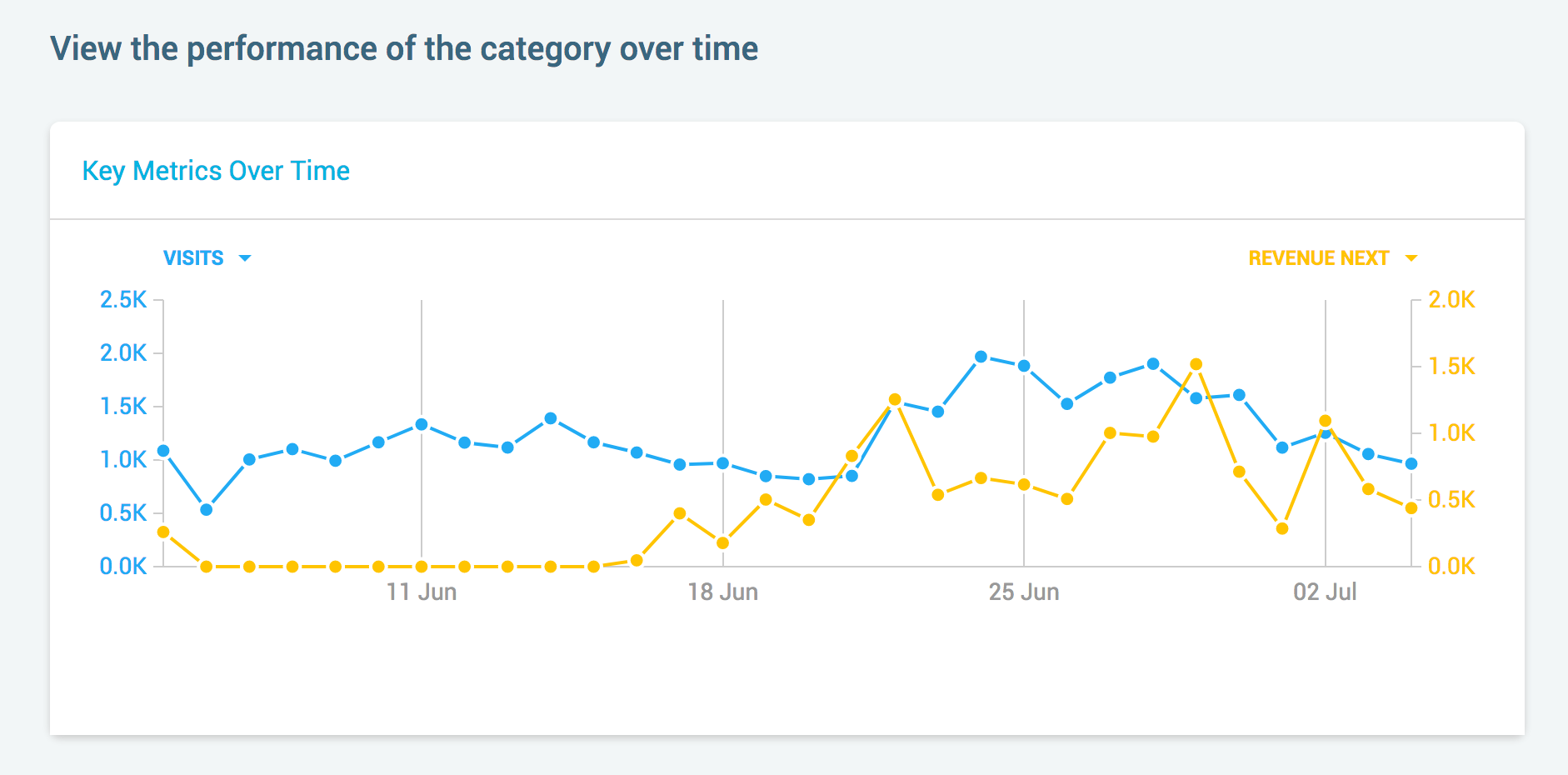

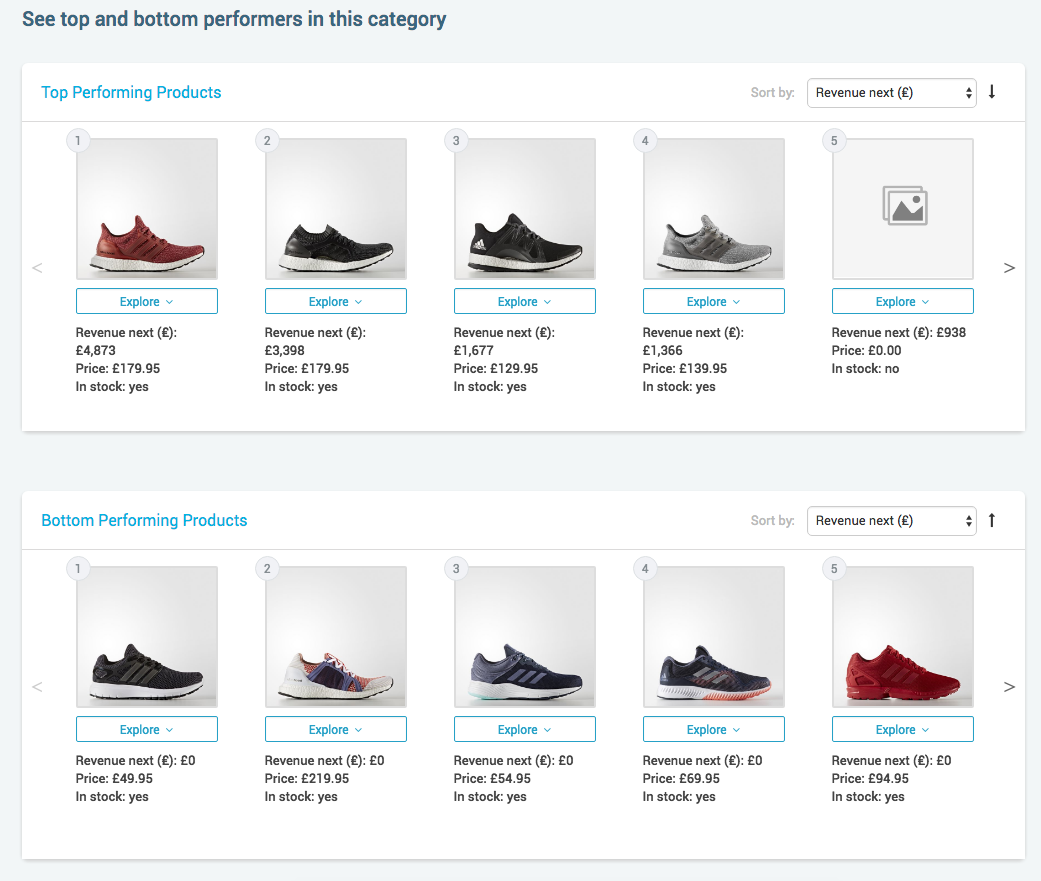
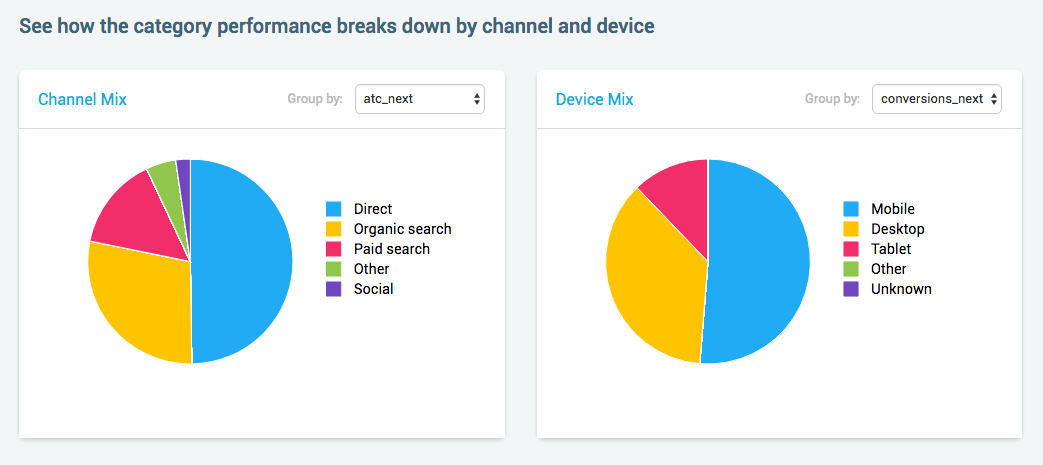
Molly can scroll to the top of the page and click in the search box to see a selection of assessments.
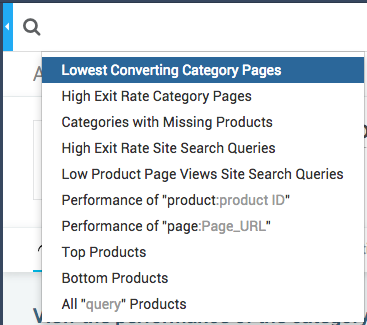
Recommendations
Throughout the assessments, Molly sees Explore buttons and icons that she can click to find options for retrieving more data or recommendations.
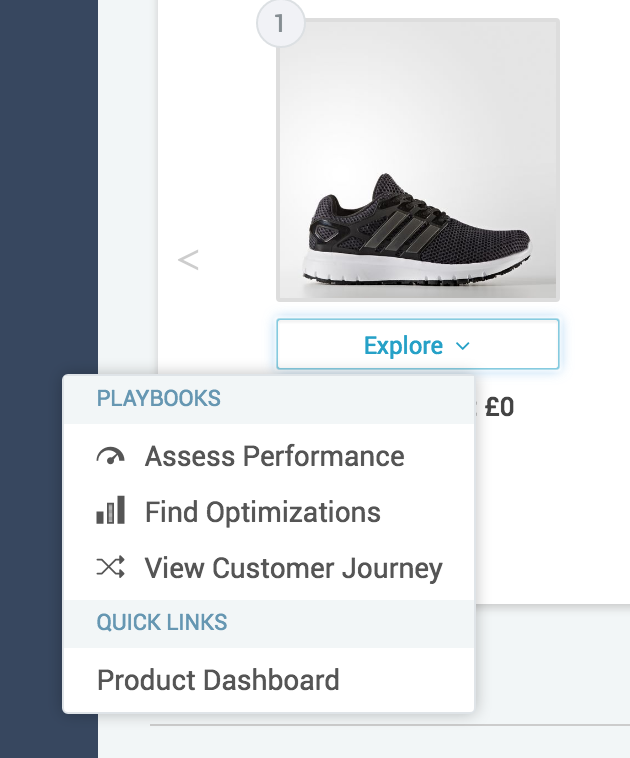
Molly selects Find Optimizations for a low-performing shoe. She wants recommendations for improving its performance on the Shoe-In site. Insights offers several recommendations.
Cross-sell the shoe in high-performing categories
Insights identifies potential categories that don't already include the low-performing shoe.
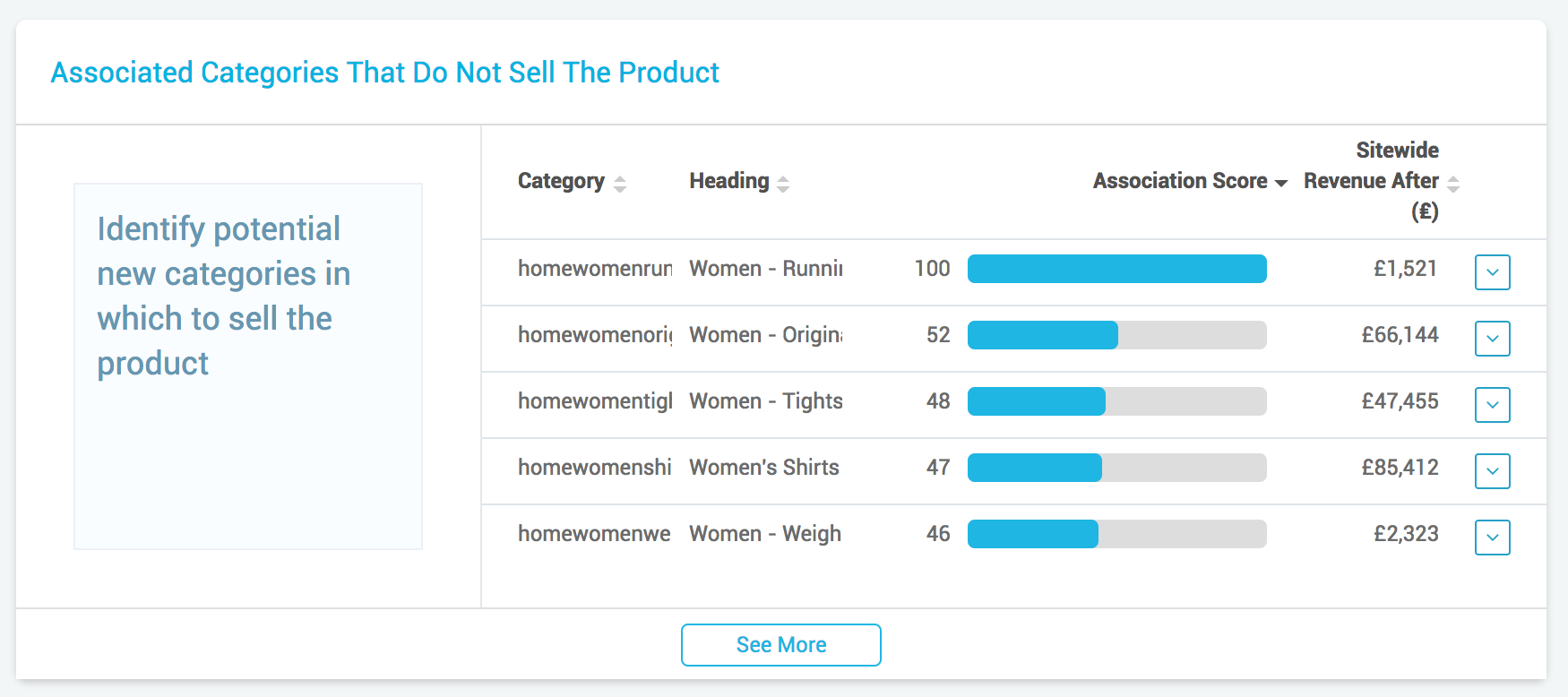
Bundle the shoe with other products or up-sell from other products
Insights identifies products that Molly might want to use to bundle with the low performing shoe or to up-sell.
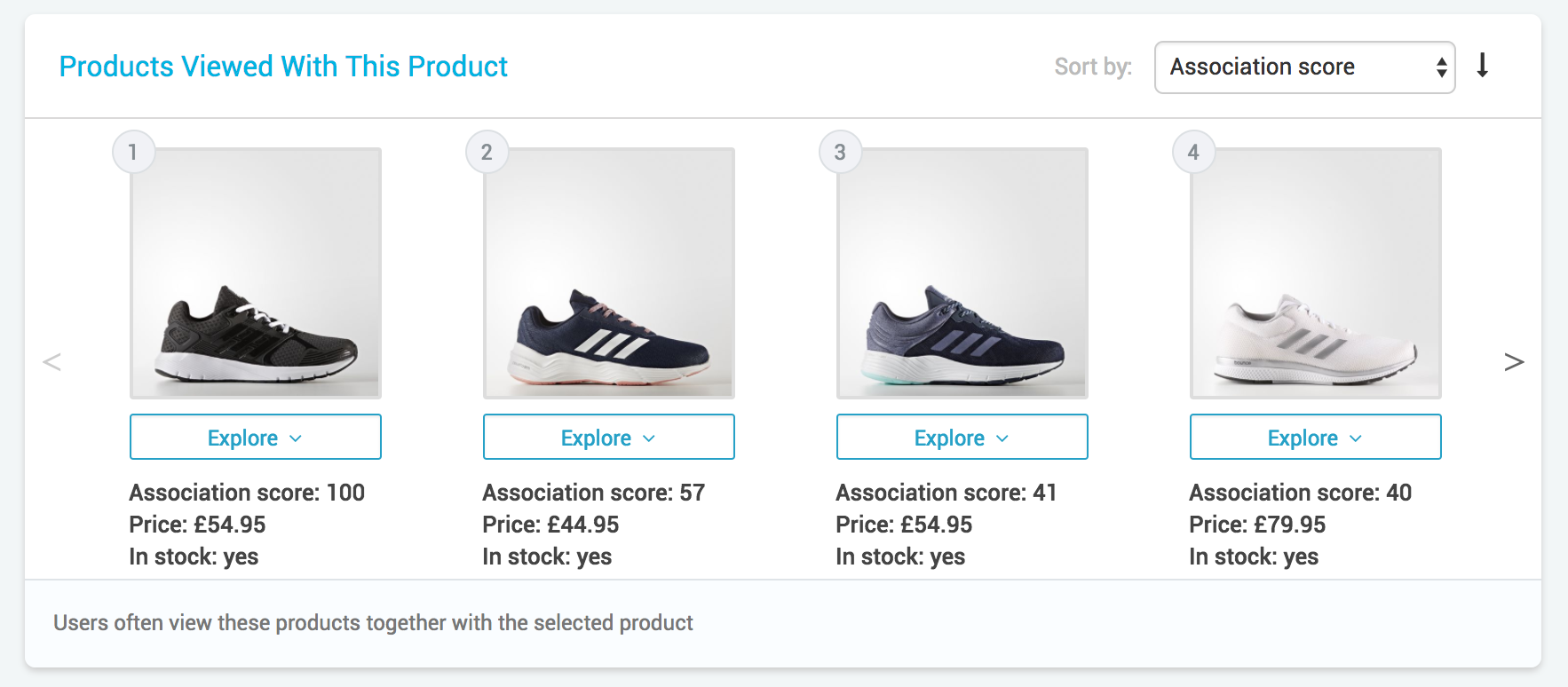

By default, the products are displayed in descending order of association score, but Molly can use the Sort by option to choose a different metric.
Association score indicates how frequently two products are viewed or bought together. A higher association score represents a closer relationship between the two products. You can read more about association score here.
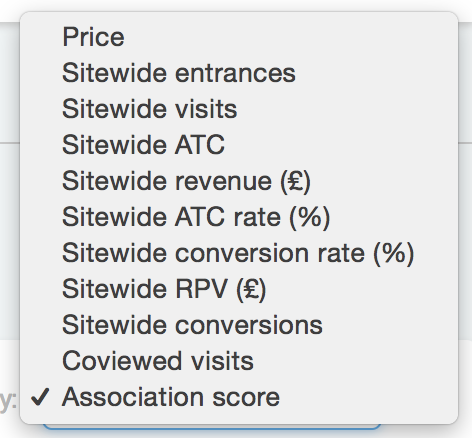
Increase the association of certain search queries with the shoe
Insights identifies the search queries that include the low-performing shoe in search results. Molly might improve the shoe's product description by creating a synonym rule.

How do I take action on a recommendation?
You can use the Insights feature to find data about customer behavior and recommendations for changes to your site. Look for Explore menus, icons , and Edit buttons next to assessments, journeys, and recommendations.
From any category dashboard, you can click the Edit Product Grid button to launch the page editor and change the product grid for that category. You can still start at the Merchandising Ranking tool, but if you go directly from Insights, then you know exactly what you're changing and why.

Similarly, you can launch the page editor from any search dashboard directly from Insights.

When you're in the page editor, there's a tab called Insights, which shows you these key product performance metrics from Insights:
- Association score
- Revenue per visit (RPV)
- Visits
- Conversion rate
If you click any product in the Insights tab, then the corresponding product is highlighted in the product grid of the Preview section. This feature lets you check product metric in the context of their position in the product grid before you make changes.
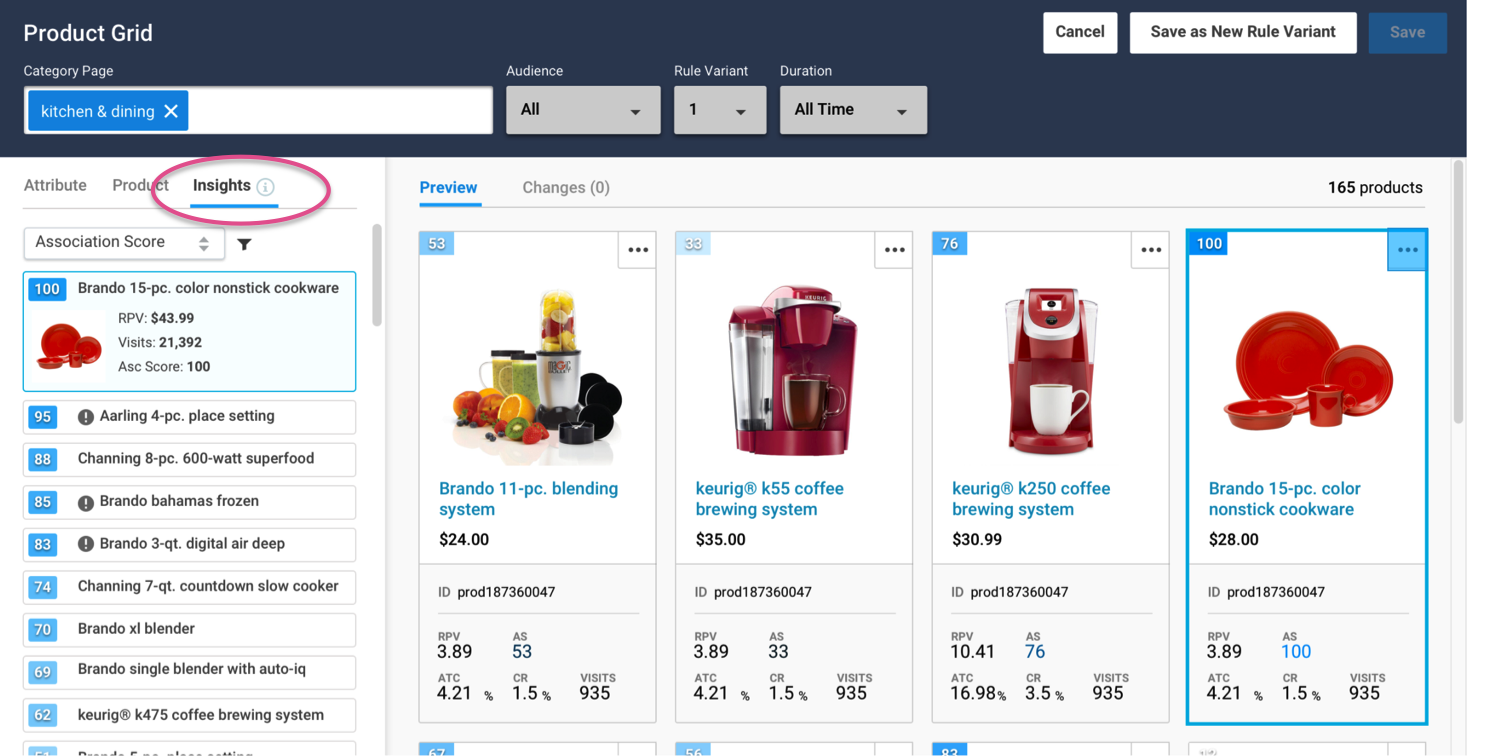
The expected time for a new product to begin showing in Insights is up to 24 hours.
Insights for Low Traffic
Some of the Bloomreach customers have low traffic sites where the user traffic is usually not as high as required by some of the metrics to be shown in the dashboard reports. Due to this, many of the reports do not show any insights on the dashboard and appears to be broken.
The limits such as minimum visits per month are kept for the reports in order to minimize the skewness for derived metrics. For example, for the report “Top Products by RPV”, the products need to have minimum views for the time period selected. This is done so that the product priced at $200 that got bought and viewed only once does not get the RPV of $200 and stands as an outlier.
In order to cater to the requirements for customers with low traffic sites, the threshold limits for report generation can be configured.
To set the custom thresholds, contact your TPMs and customer support.
Updated over 1 year ago
